Is graffiti an important art form to know? Yes, I would say so. Graffiti is culturally relevant all over the world. Not only that, but since it is a newer art form than oil painting and hieroglyphics there is so much more room to grow and get expressive without restraints.
I want to emphasize when you read this list that this is in order for GRAFFITI. There are certainly more commendable people on this list that might even be more popular for their other mediums, but this is solely based on graffiti as a whole and not their journeys into fine art.
In this post, I will count down the 10 most important graffiti artists that you should know. This is very important if you are looking to learn more about the art form. Information on these people is crucial.
11.) Daze
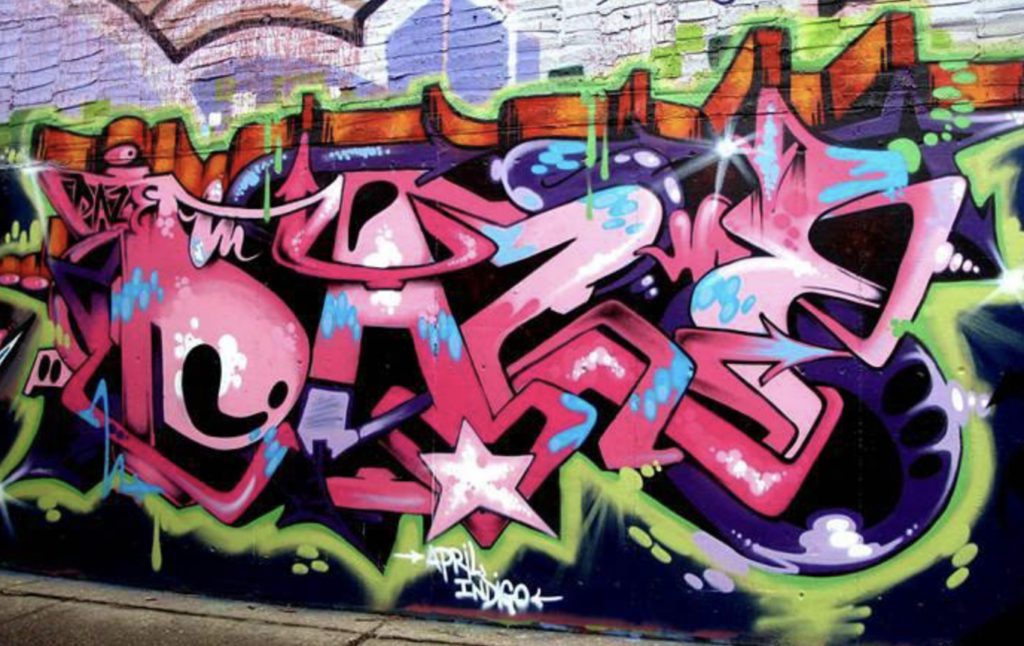
Daze, also known as Chris Ellis, is a prominent American graffiti artist and contemporary painter. Born on June 11, 1962, in New York City, he played a significant role in the graffiti and street art movement that emerged in the 1970s and 1980s. Here’s a brief overview of Daze’s life history:
- Early Years in Graffiti:
- Daze grew up in New York City during the formative years of hip-hop culture and graffiti art.
- Next, in the mid-1970s, he began painting subway trains. Also, these were a prominent canvas for graffiti artists at the time.
- Graffiti Career:
- Daze gained recognition for his vibrant and dynamic graffiti pieces on New York City subway cars.
- He is alongside other notable graffiti artists like Keith Haring and Jean-Michel Basquiat. Daze became part of the burgeoning art scene in downtown Manhattan.
- Transition to the Art World:
- As the 1980s progressed, Daze, along with some of his peers, transitioned from the streets to the art world.
- Galleries began to recognize the cultural significance and artistic merit of graffiti, and Daze’s work gained attention.
- Recognition and Exhibitions:
- Daze participated in several important exhibitions that helped legitimize graffiti as a recognized art form.
- His work has been showcased in both solo and group exhibitions. Also, this is contributing to the growing acceptance of graffiti within the mainstream art world.
- Style and Influence:
- Daze’s style is characterized by a blend of urban imagery, bold colors, and a sense of narrative. Also, often explores themes related to city life, culture, and his personal experiences.
It’s important to note that the details of Daze’s life and career may continue to evolve, and his impact on the art world remains significant. As of my last knowledge update in January 2022, Daze continues to be active in the art scene, contributing to the ongoing dialogue surrounding graffiti and contemporary art.
10.) Lady Pink
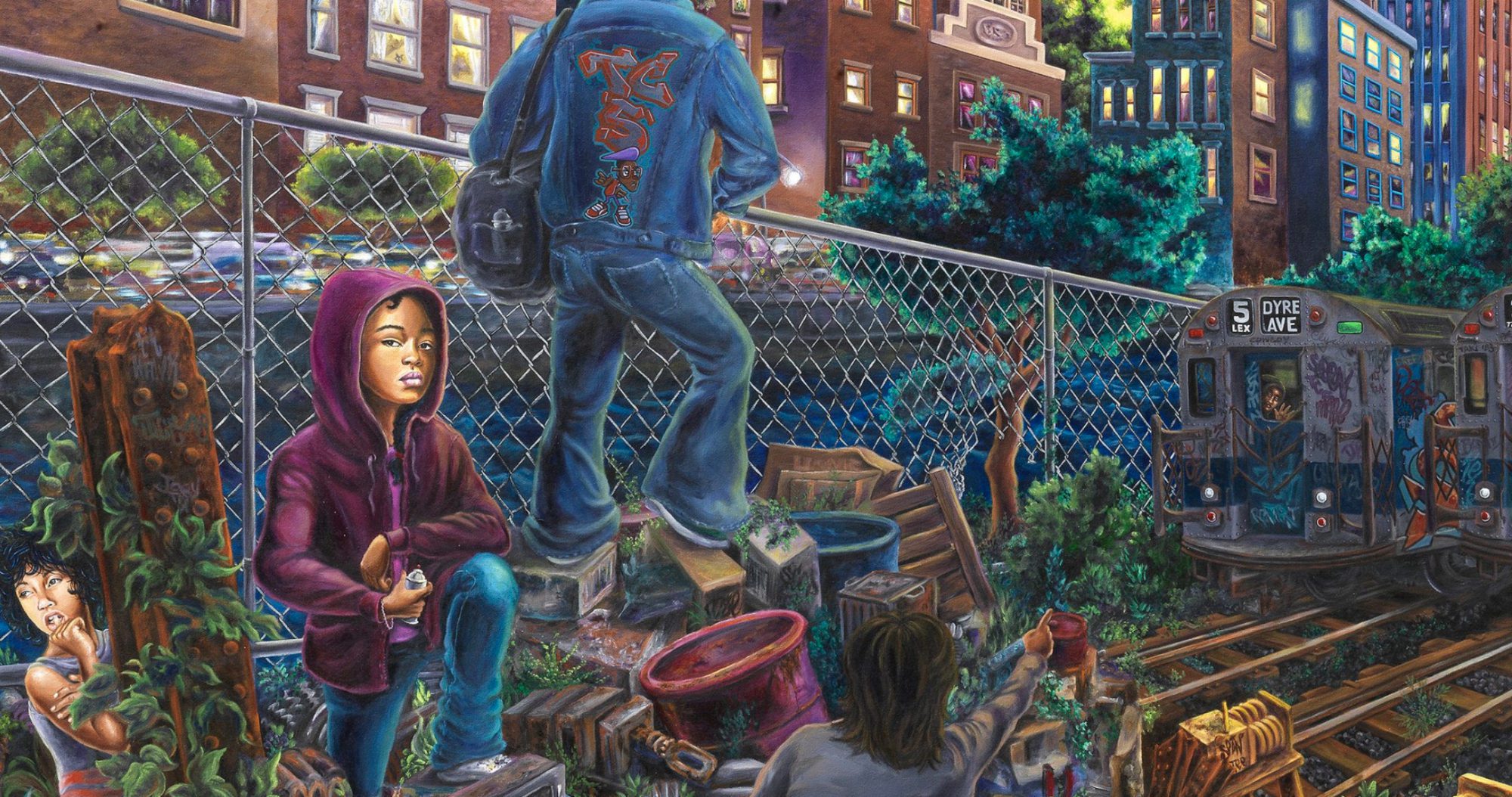
Lady Pink, named Sandra , was born on June 30, 1964. She is a renowned graffiti artist known for her contributions to the street art movement in the United States. Here’s an overview of Lady Pink’s life history:
- Early Years and Introduction to Graffiti:
- Lady Pink was born in Ambato, Ecuador, and moved to New York City at a young age.
- First, she became involved in the graffiti scene in the early 1970s. She is inspired by the burgeoning hip-hop culture and the work of early graffiti writers.
- Pioneer in the Male-Dominated Graffiti Scene:
- Lady Pink gained recognition as one of the few female graffiti artists in a predominantly male-dominated subculture.
- She challenged gender norms and stereotypes, making significant contributions to the visibility and acceptance of female artists in the graffiti world.
- Collaboration with Seen and TC5:
- Next, Lady Pink became associated with the graffiti crew TC5 (The Cool 5) and collaborated with fellow graffiti artist Seen (Richard Mirando). Their partnership produced iconic works that showcased their unique styles.
- Exhibitions and Recognition:
- Lady Pink’s work started to gain attention beyond the streets, and she became involved in gallery exhibitions during the 1980s.
- She participated in the landmark “Graffiti Art Success for America” show at Fashion MODA in the Bronx in 1980, which helped legitimize graffiti as a contemporary art form.
- Involvement in Hip-Hop Culture:
- Lady Pink’s contributions extended beyond graffiti, as she became involved in various aspects of hip-hop culture. She collaborated with musicians, contributed to album covers, and engaged in the cultural dialogue of the time.
- Lady Pink’s life and work were featured in the documentary “Wild Style,” a film that played a crucial role in introducing hip-hop and graffiti culture to a broader audience.
Her story reflects the evolution of the graffiti movement and its cultural significance.
9.) Os Gemeos
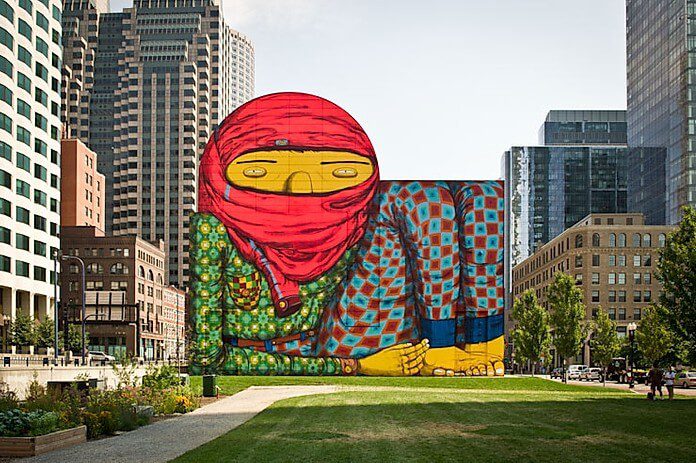
Os Gemeos is the collaborative name of Brazilian identical twin brothers, Otavio and Gustavo Pandolfo, who are renowned street artists and muralists. They were born on October 31, 1974, in São Paulo, Brazil. Here’s a brief overview of their life and artistic journey:
- Formation of Os Gemeos:
- In the late 1980s and early 1990s, the brothers officially formed the artistic duo Os Gemeos, which means “The Twins” in Portuguese. Their collaboration allowed them to combine their individual talents and create a unique artistic identity.
- Graffiti Roots:
- Os Gemeos started as graffiti artists, leaving their mark on the streets of São Paulo. They gained recognition for their distinctive style characterized by vibrant colors. Also, surreal characters, and a blend of Brazilian folklore and urban culture. They were exposed to hip-hop culture, including breakdancing and graffiti. This greatly influenced their artistic development.
- Multifaceted Artistic Practice:
- They are primarily known for their large-scale murals and graffiti. In addition, Os Gemeos have also explored other forms of artistic expression. They have worked on sculptures, paintings, and installations, showcasing their versatility in the art world.
- Influence of Brazilian Culture:
- Os Gemeos often incorporate elements of Brazilian folklore. Also, traditions and cultural symbols into the artwork. To add, the connection to their roots gives their pieces a distinct identity and reflects their pride in their Brazilian heritage.
- Exhibitions:
- Not only are they world renowned, but they have work all over the world! Some of their most famous pieces are in Italy, Portugal, Brazil, America, and so much more.
8.) Jean-Michel Basquiat
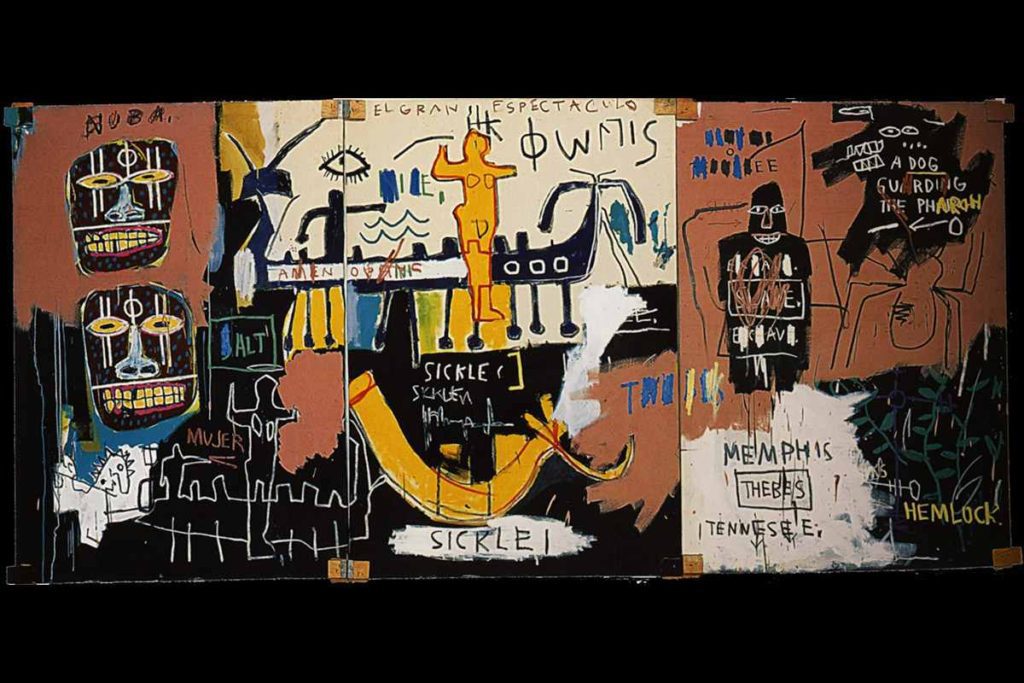
Basquiat is not only a graffiti artist, but paved the way for neo expressionsism in the modern art scene. Basquiat made a name for himself as a street artist under the pseudonym “SAMO” (an abbreviation for “Same Old Shit” or “Same Old”).
Jean-Michel Basquiat was an American artist born on December 22, 1960, in Brooklyn, New York, and he passed away on August 12, 1988, at the age of 27.
Here are key aspects of Basquiat’s graffiti career:
- SAMO:
- Basquiat, along with his friend Al Diaz, began spray-painting graffiti messages around Lower Manhattan in the late 1970s. The SAMO project was known for its cryptic and poetic statements, often accompanied by a copyright symbol. Also, messages ranged from social commentary to personal reflections. They captured the attention of the local art scene.
- Enigmatic Messages:
- SAMO’s graffiti messages were characterized by their enigmatic and thought-provoking nature. Also, the statements were a mix of humor, critique, and culture, referencing sociology-political climates.
- Street Presence:
- The SAMO graffiti became a notable presence on the streets of Lower Manhattan, creating a buzz in the local art community. To add, the mysterious and intriguing messages added an element of intrigue to the urban landscape.
- Shift to Fine Art:
- In the late 1970s and early 1980s, Basquiat transitioned from street art to fine art. Next, he began to create paintings on canvas. This helped to draw on his graffiti roots but develop a more refined and complex style.
- Recognition and Success:
- Basquiat quickly gained recognition for his unique approach to art. His work often featured a combination of text and imagery, drawing on a range of cultural influences. This includes African, Caribbean, and African American history.
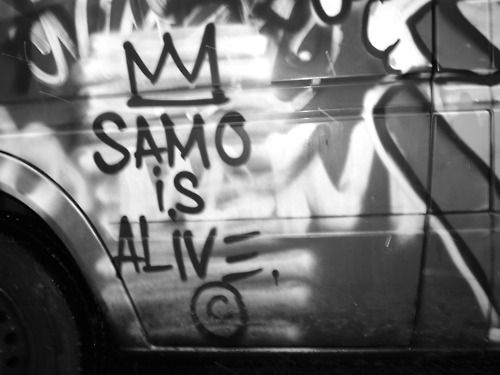
7.) Lee Quiñones
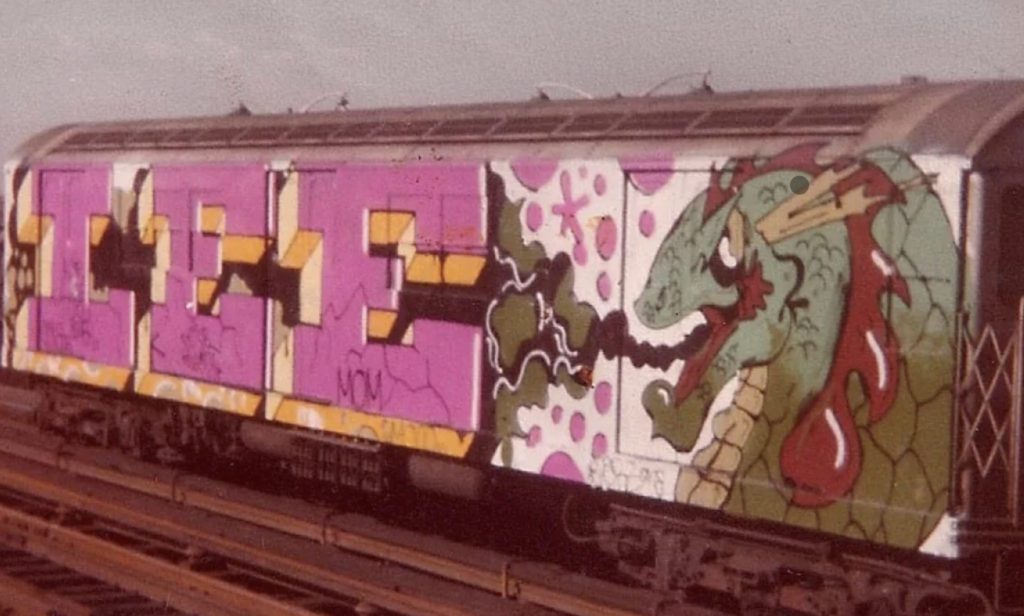
Lee Quiñones is a prominent graffiti artist who gained recognition in the 1970s and 1980s. This is because of his contributions to the graffiti art movement in New York City. Here are some key points about Lee Quiñones’ graffiti career:
- Early Years and Introduction to Graffiti:
- Quiñones was born on October 20, 1960, in Ponce, Puerto Rico, and raised in New York City. He became involved in graffiti during the early days of the movement in the late 1970s.
- Involvement with The Fabulous 5:
- Lee Quiñones was a member of The Fabulous 5. This is a group of influential graffiti artists that also included artists Fab 5 Freddy, Bode, Dondi, Futura 2000, and of course Lee. This group played a significant role in the development of graffiti as an art form.
- Notable Subway Graffiti:
- First, Quiñones gained widespread recognition for his elaborate and colorful subway graffiti pieces. His work often featured intricate lettering, characters, and unique visual elements. Quiñones was known for his distinctive style, which set him apart in the competitive graffiti scene.
- Transition to Gallery Art:
- Like many graffiti artists of his generation, Quiñones made the transition from creating illegal street art to showcasing his work in galleries. This move helped legitimize graffiti as a recognized form of contemporary art.
- Role in “Wild Style” Film:
- Next, Lee Quiñones played a role in the film “Wild Style” (1983), which is a seminal work exploring the hip-hop and graffiti culture of the time. Finally, his involvement in film helped bring attention to graffiti as an integral part of a larger urban subculture.
6.) SEEN
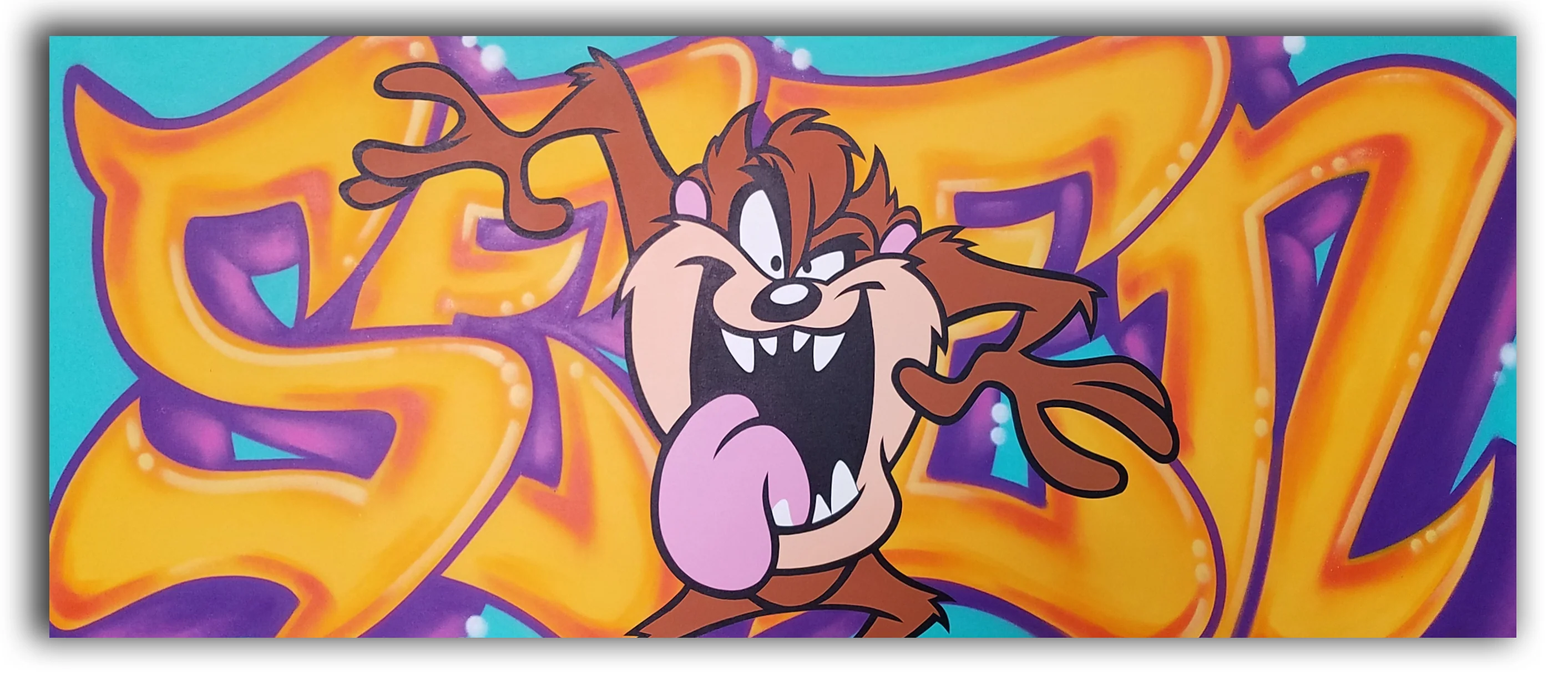
Richard “SEEN” Mirando, known simply as SEEN, is a pioneering graffiti artist who played a crucial role in the development and popularization of graffiti as an art form. Here are key points about SEEN’s career:
- Early Years:
- SEEN was born in 1961 in the Bronx, New York. He began his graffiti career in the early 1970s. Also, this is during the formative years of the graffiti movement in New York City.
- Style and Innovation:
- SEEN quickly gained attention for his distinctive style and artistic innovation. He is known for his vibrant color palette, creative lettering, and dynamic compositions. His ability to blend different styles and techniques sets him apart in the graffiti scene.
- Participation in Historic Exhibitions:
- SEEN is among the first wave of graffiti artists to transition from the streets to the art gallery. He participated in historic exhibitions that showcased graffiti as a legitimate form of contemporary art. This helped legitimize the art form and brought it into mainstream awareness.
- International Influence:
- SEEN’s influence extended beyond New York City, reaching an international audience. He played a role in popularizing graffiti globally, inspiring artists in other parts of the world to embrace and adapt the form for their own expressions.
- Prolific Tagging:
- SEEN became one of the most prolific graffiti writers of his time. Also, his tags and pieces were spread across subway cars, buildings, and other urban surfaces. His extensive body of work contributed to the visibility and recognition of graffiti as a legitimate art form.
5.) Toxic
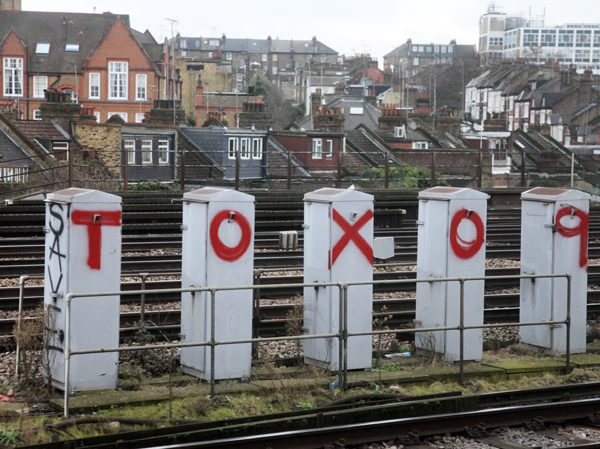
Torrick Ablack was born in January of 1965. He played a major part, primarily with his tags, in the American Graffiti movement of the 1980’s.
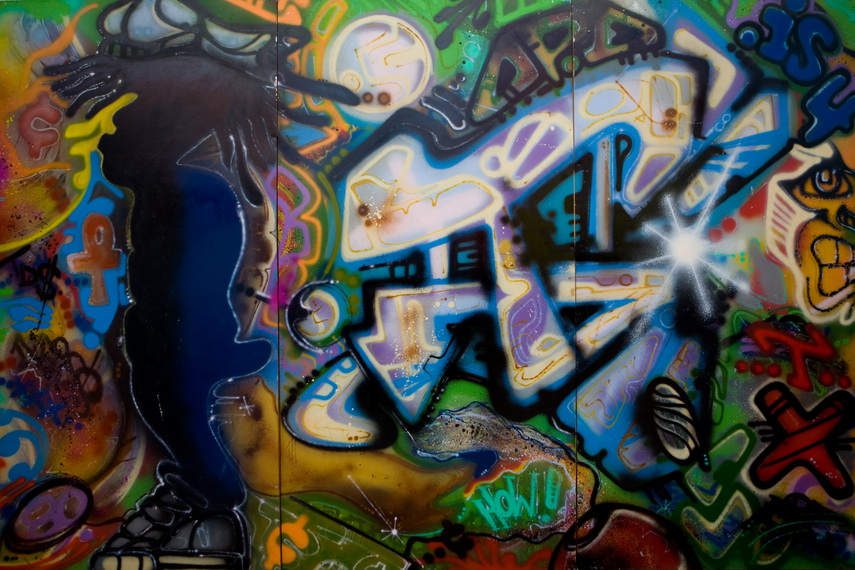
- Early Years:
- Torrick’s father was from Trinidad and his mother was Puerto Rican, and found a lot of identity in the melting pot of New York City. He became interested in artwork at a very early age.
- Tag Master Killers:
- At the age of 13, Toxic joined a local graffiti group with A-One and Kool Koor. They joined Rammellzee’s graffiti crew Tag Master Killers. After each developing their own style and gaining recognition, they moved from the Bronx to Downtown NYC.
- Toxic and Basquiat:
- In 1982, Toxic met Jean Michel Basquiat after his Annina Nosei Gallery. After being taken on as a mentor, they decided to head out to Los Angeles for the Gagosian Gallery in 1983.
- Socio-Political Influence:
- While in Los Angeles, Toxic noticed many discrepancies in the film industry. First, how Hollywood portrayed people of color. Next, Basquiat created Hollywood Africans in front of the Chinese Theater with Footprints of Movie Stars (1983). This incorporated Basquiat, Toxic, and Remmellzee.
- Later Career and Impact:
- Toxic began to venture into abstract art after developing his graffiti career. In addition, he was part of the first showcasing of graffiti in an American Institution in Illinois in 2014. He continues to push traditions into progression for the world.
4.) Dondi
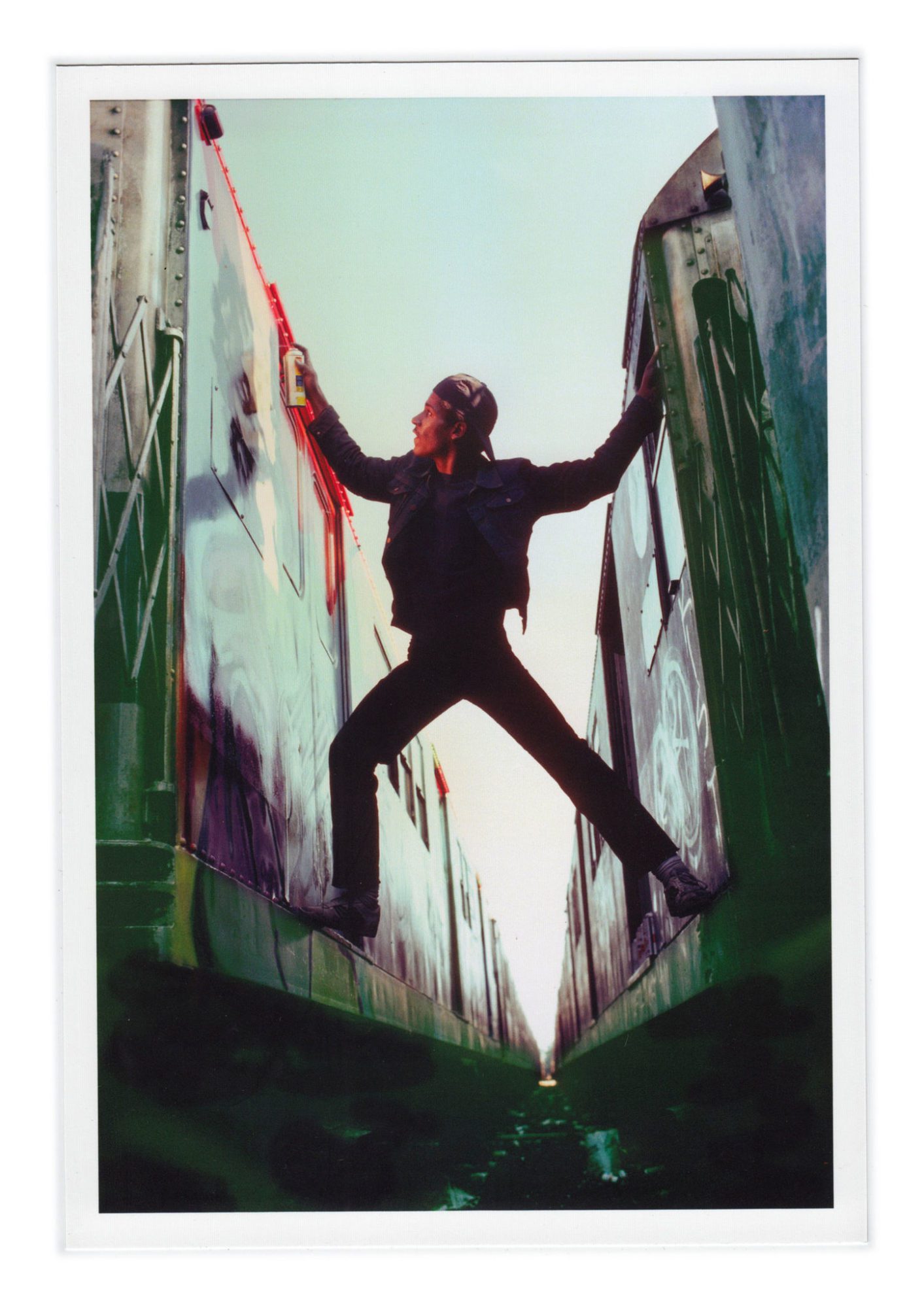
Dondi, born Donald Joseph White, was a highly influential graffiti artist. He played a significant role in the early years of the graffiti movement in New York City. Here’s an overview of Dondi’s life history and graffiti career:
- Birth and Background:
- Dondi was born on April 7, 1961, in New York City. He grew up in East New York, Brooklyn, during a time when graffiti was emerging as a cultural phenomenon.
- Early Involvement:
- Dondi became involved in graffiti during the 1970s when the movement was still in its infancy. Next, he started by tagging his name on subway cars and quickly gained recognition for his unique style.
- Top-to-Bottoms and Whole Cars:
- Dondi was known for his ambitious and eye-catching “top-to-bottom” and “whole car” pieces. This is where he painted an entire subway car from top to bottom or covered the entire side. In addition, this was a significant departure from the more common tagging and smaller pieces.
- “Children of the Grave”:
- Dondi was a member of the graffiti crew known as “The Cool 5” (TC5), which included other influential artists such as Futura 2000 and Blade. Remember when we talked about this group earlier? This crew played a crucial role in shaping the graffiti landscape.
- Impact on Graffiti Art:
- Dondi’s contributions to graffiti were groundbreaking. His intricate lettering, vibrant colors, and innovative designs influenced a generation of graffiti writers and contributed to the development of the art form.
- Sadly, Dondi passed away from AIDS-related complications on October 2, 1998. Despite his untimely death, his legacy endures. Also, his work is celebrated in the art world and beyond.
3.) Cornbread
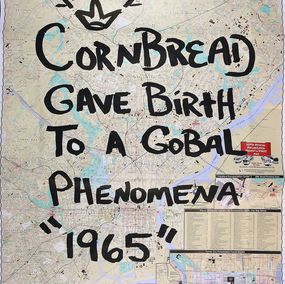
Cornbread, also known as Darryl McCray, is one of the earliest graffiti artists. Especially in the Philadelphia area. Cornbread’s style was characterized by bold, large lettering that he would spray-paint on surfaces throughout Philadelphia.
His career in art is notable for pioneering graffiti as an expressive and public form of art. Here’s an overview of Cornbread’s career:
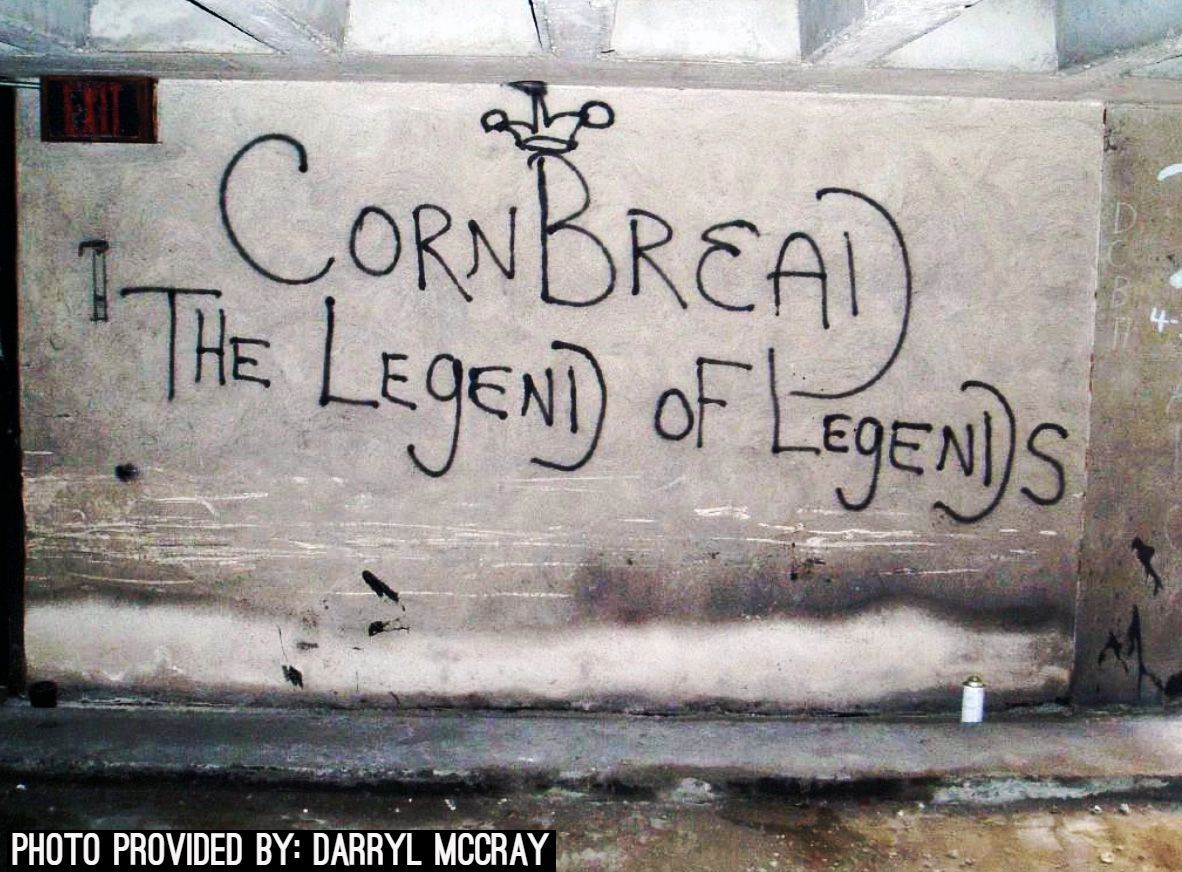
- Origin of the Name:
- Cornbread gained his moniker while serving time at a youth correctional facility. According to the story, he chose the name “Cornbread” because it was the only food he liked on the menu.
- Pioneer of Tagging:
- Cornbread is credited with being one of the first individuals to engage in tagging. His early tagging efforts are a precursor to the more elaborate graffiti art that would later develop.
- Cornbread is known for his extensive tagging campaign throughout Philadelphia. He wrote his name on walls, buildings, and other surfaces. This created a visual presence that captured attention.
- Evolution of Street Art:
- While Cornbread’s early contributions were in the form of tagging, he transitioned to more elaborate and artistic forms of street art.
- Exhibitions and Galleries:
- Cornbread participated in gallery exhibitions, showcasing the evolution of his art beyond the streets. Also, this move contributed to the recognition of graffiti as a legitimate form of contemporary art.
- Early Documentation in Media:
- Cornbread’s contributions to graffiti are documented in various media, including newspapers and magazines. His appearances in the media help bring attention to graffiti as an emerging cultural phenomenon. In addition, this lays the groundwork for subsequent generations of graffiti artists seeking recognition.
- Personalizing Public Spaces:
- Cornbread’s use of graffiti to express personal feelings and stories personalized public spaces. Also, this approach influenced later generations of graffiti artists. People that see the potential for using public environments as a platform for storytelling and self-expression.
2.) Banksy
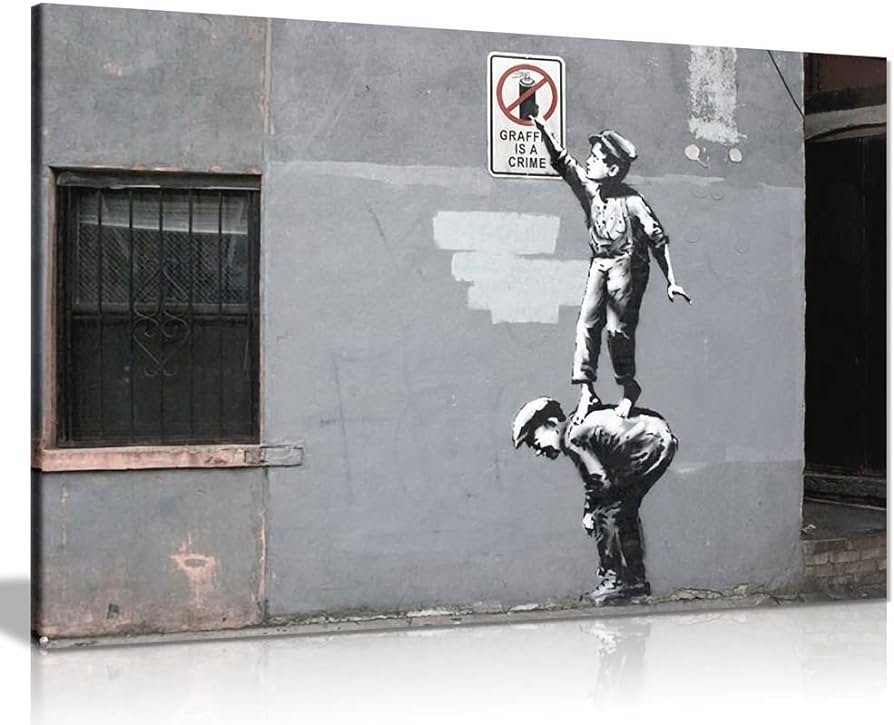
Banksy is a pseudonymous street artist known for his distinctive stenciled works that often carry social and political commentary. Not only does his identity remain unknown, adding to the mystery surrounding his persona. Here is an overview of Banksy’s career:
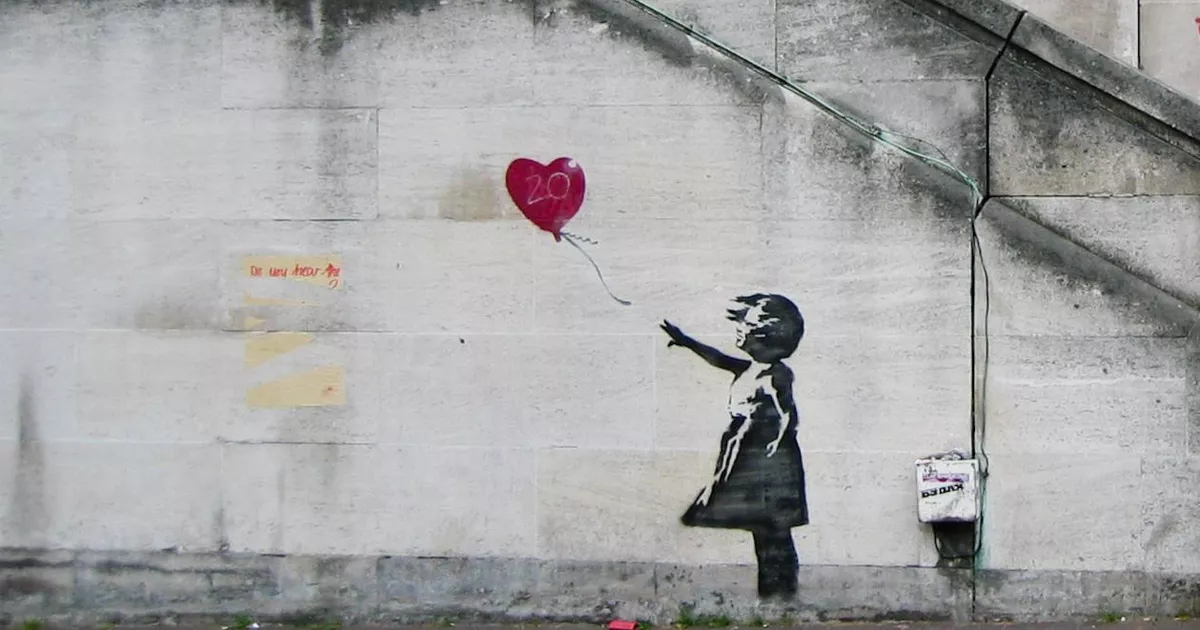
- Bristol Roots:
- Banksy began his artistic career in the Bristol underground scene in the early 1990s. The city provided a fertile ground for street art, and Banksy’s unique style started gaining attention. Banksy’s birthdate is not publicly known. Banksy is a pseudonymous street artist, and his true identity remains undisclosed.
- Identity Secrecy:
- Banksy’s true identity is not publicly known. Also, he has maintained anonymity throughout his career. He often appears in public wearing disguises, and taking extensive measures to conceal his identity.
- Stenciling Technique:
- Banksy’s distinctive use of stencils allow him to create detailed and thought-provoking images quickly. In addition, this technique became a hallmark of his work, making it recognizable worldwide.
- Anti-Establishment Stance:
- Banksy is known for his anti-establishment stance and critique of authority. His works often challenge societal norms and question political and economic systems.
- Mainstream Recognition:
- Despite his subversive approach, Banksy’s works have gained widespread popularity and attention. Also, his pieces have been sold for significant amounts at auctions. This brings street art into the mainstream art world.
1.) Keith Haring
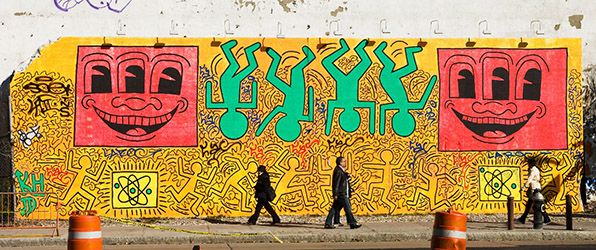
Keith Haring was a renowned American artist and social activist known for his distinctive visual language. This included elements of graffiti art.
While Haring’s work wasn’t traditional graffiti in the sense of street tagging, he did draw inspiration from street culture and incorporated graffiti-like elements. In the realms of graffiti, he fell more into murals over tags and stencils. Here’s an overview of Keith Haring’s career:
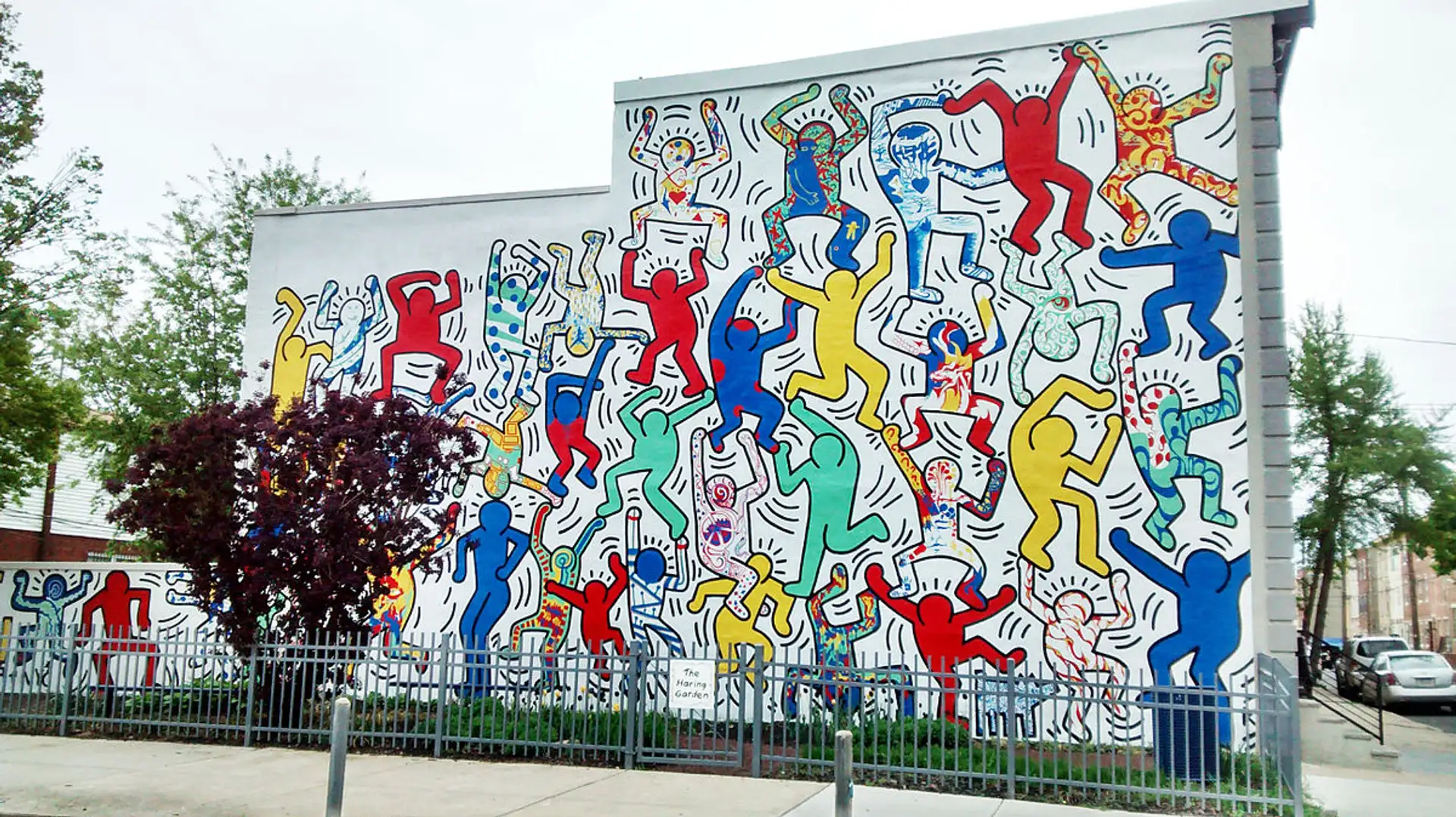
- Birth and Background:
- Keith Haring was born on May 4, 1958, in Reading, Pennsylvania. Then, he moved to New York City in 1978 to attend the School of Visual Arts.
- In the early 1980s, Haring gained attention for his chalk drawings on unused advertising panels in New York City subway stations. Additionally, these spontaneous and dynamic drawings, influenced by the aesthetics of graffiti, marked his emergence in the art scene.
- Iconography:
- Haring developed a unique visual language characterized by bold lines, vivid colors, and simple, symbolic figures. Also, his iconic images, including radiant babies, barking dogs, and dancing figures, became instantly recognizable.
- Impact on Contemporary Art:
- Keith Haring’s impact on contemporary art is immense. His accessibility, use of public spaces, and commitment to social causes influenced a generation of artists. Then this expanded the reach of art beyond traditional gallery spaces.
- Collaborations:
- Haring collaborated with fellow artist Jean-Michel Basquiat, and their joint works are highly regarded. Both artists were prominent figures in the downtown New York City art scene during the 1980s.
- Keith Haring Foundation:
- Established in 1989, the Keith Haring Foundation continues to support organizations addressing issues related to AIDS, children’s programs, and the arts.
- Haring passed away on February 16, 1990, at the age of 31 due to AIDS-related complications. Despite his relatively short career, his legacy endures, and his art continues to be celebrated worldwide.
Comments are closed.

Howdy would you mind letting me know which
web host you’re using? I’ve loaded your blog in 3 different
browsers and I must say this blog loads a lot
faster then most. Can you suggest a good internet hosting
provider at a fair price? Thanks, I appreciate it!
Im happy to hear it. Heres my email:
[email protected]
Feel free to message me there with questions.